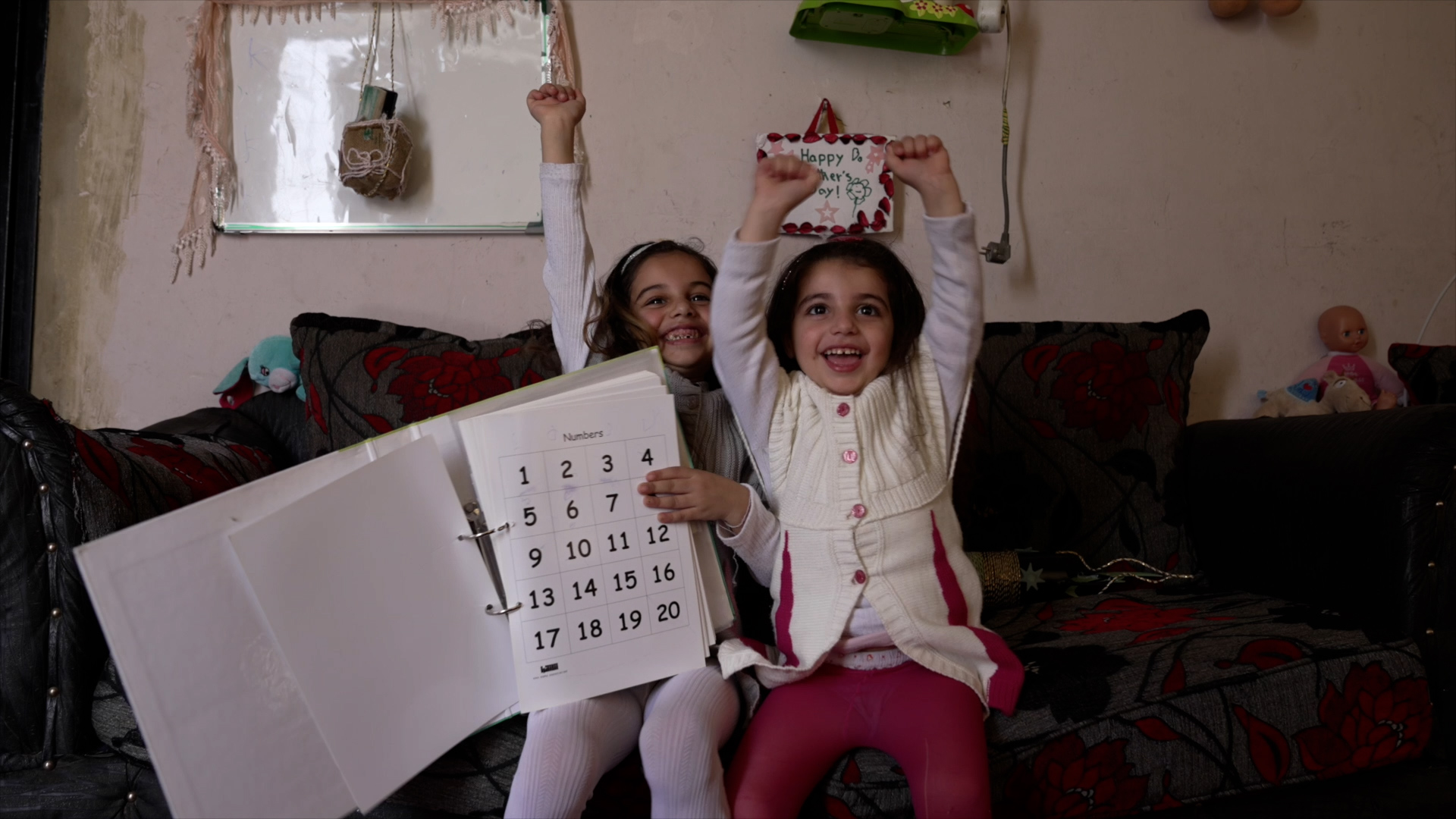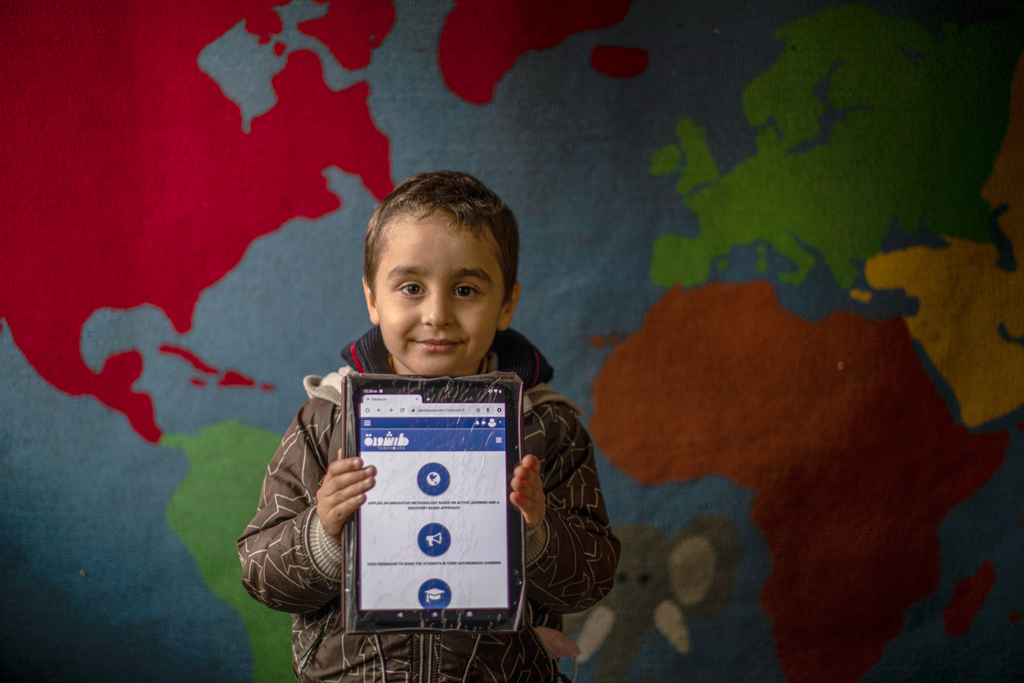
Young children impacted by AIDS need crucial education and support
Barriers to education, Early childhood development, Education funding, Health and nutrition
Early childhood development, including pre-primary education, can play a huge role in ensuring marginalised children get the best start in life.
Life is challenging for children who live in communities impacted by HIV/AIDS. Over two million of them are HIV positive themselves – and millions more are suffering the effects of the virus on their parents and families.
Without nurturing care and early childhood development (ECD), vulnerable youngsters under the age of five are in danger of being left behind. But investment in these crucial early years is lacking – less than 1% of education aid goes on pre-primary and developing countries are not investing enough in the future of their under-fives.
A framework of support that includes quality early childhood development and access to pre-primary education is absolutely crucial. Theirworld has been calling for ECD and pre-primary to be prioritised within education strategies – and that must include funding for children impacted by HIV/AIDS.
Here we look at the issues of ECD and HIV/AIDS, and the help children need.
The case for early childhood development
Every child deserves the best start in life. 90% of the brain develops before the age of five and the foundations for success at school and in later life will be in place.
Young children need quality nurturing care – including play, health, protection, nutrition and early learning – particularly in the first three years. They also need access to free, quality pre-primary education between the ages of three and five.
But too many under-fives are being failed. More than 180 million children do not have access to quality early learning. Over 80% of children aged three to five in the poorest countries are not in pre-primary education.
The most marginalised children are affected even more and are at higher risk of being left behind. They include children affected by conflicts and disasters, those with disabilities and children impacted by HIV/AIDS.
The stats on HIV/AIDS and children
- More than two million children are HIV positive – but fewer than half of them are being treated.
- Every day, there are nearly 400 new infections in children.
- In 2017 it was estimated that 13.4 million children had lost one or both parents to AIDS and millions more suffered its effects on their family.
- Children up to the age of four living with HIV face the highest risk of any age group of AIDS-related death. But only half of HIV-exposed babies are tested by the recommended age of two months.
- In East and Southern Africa, UNAIDS estimates that 30% of all children are now born to women living with HIV.
The impact of HIV/AIDS on young children
The Coalition for Children Affected by AIDS said in a brief last year: “What happens to a child during pregnancy and in the first 1,000 days determines their path through life.” There are many ways in which HIV/AIDS can have a direct or indirect impact on that path.
Coalition Manager Corinna Csaky explained: “The first 1,000 days are a vital window for early childhood development (ECD) – and it is often precisely in this time that HIV-affected households are under most strain.
“The social and economic poverty and exclusion facing HIV-affected children and their caregivers affects their ability to eat well, to provide their children with nurturing care and they are at greater risk of exposure to toxic stress, which impacts on ECD.
Put simply, without broader social and economic support, these under-fives may not make it to preschool. Corinna Csaky, Manager of the Coalition for Children Affected by AIDS
“One aspect of ECD that really needs greater investment and is often overlooked is the mental wellbeing of the mother.
“HIV can cause depression amongst mothers – both the disease, its medication and the social and economic impacts of living with HIV.
“As a result, some mothers living with HIV are less able to nurture their children or to bond with them.
“The potential and resilience amongst both mother and child are limited. And they slip even further behind into greater risk of HIV infection, inequality, violence, exclusion and poverty, which are transferred along generations.”
Where in the world
The countries most affected by HIV/AIDS are in Eastern and Southern Africa.
The highest number of new infections are in Kenya, Zambia, Tanzania, Uganda, Zimbabwe and Malawi, according to the 2018 annual report by PEPFAR (the US President’s Emergency Plan for AIDS Relief), which is the largest bilateral funder to HIV-affected countries.
But the next hot spots are expected to be in Russia, Indonesia and several countries in West Africa with high infection rates and poorly-developed resources.
At a meeting in Senegal last month, UNAIDS, UNICEF and the World Health Organization urged countries in western and central Africa to do more to stop new HIV infections among children and adolescents and increase HIV testing and treatment coverage.
What the children need to thrive
The Sustainable Development Goals agreed by world leaders to be achieved by 2030 include quality education for all. Within that is a specific target to “ensure that all girls and boys have access to quality early childhood development, care and pre-primary education so that they are ready for primary education.”
Millions of children around the world are not getting that opportunity. But marginalised children face an even more uphill struggle – including children in communities affected by HIV/AIDS, who have significant challenges to overcome.
That doesn’t just mean providing access to education – it means young children affected by HIV/AIDS need specific support that matches their evolving needs as they grow.
That includes medical and social, economic and psychological support to help children avoid, survive and overcome HIV and its impacts. It also means giving parents, carers and communities of children affected by HIV and AIDS the skills, resources and attitudes they need to support the youngsters.
Corinna Csaky said: “Put simply, without broader social and economic support, these under-fives may not make it to preschool – and for others who do, the impacts of preschool will be limited by the other challenges they face.
“Under-fives, as with all children, need comprehensive support to survive and thrive.
“In particular, urgent investment is needed in social protection and psychosocial support to their caregivers.”
Taking on the challenge
The Conrad N. Hilton Foundation has been helping AIDS-affected children in five East African countries – Kenya, Malawi, Mozambique, Tanzania and Zambia.
It previously invested more than $50 million in programmes, much of which was used to get children into pre-primary school. Its 2017-21 strategy – backed by another $50 million – has more emphasis on reaching pregnant women and caregivers of very young children from birth to the age of two.
Its strategy said: “While we will focus the majority of our investments on pregnant women and the youngest children during the first 1,000 days, we recognise that access to early learning opportunities for preschool-age children are important.”
The Hilton Foundation aims to provide quality ECD to at least 100,000 children by 2021, as well as training for 60,000 caregivers.
Ed Cain, Vice President of Grant Programs at the Hilton Foundation, said: “Learning is at the very heart and soul of what we do. The amount of resources that philanthropy has to invest on solving some of the problems we have chosen to address – in this case young children affected by AIDS – is only a drop in the bucket in terms of what is needed.
“But if we can demonstrate through learning what are the best ways to address the plight of these children from zero to five, we can bring others who do have additional resources to invest along with us.”
Now it's time for more action
Theirworld has been campaigning for more investment by countries and donors in early childhood development, including pre-primary education.
We have called for 10% of education spending to go on ECD and for every child to have access to two years of free, quality pre-primary school.
Fiona Duggan, Head of Projects at Theirworld, said: “There is much evidence to suggest that pre-primary education, within the context of holistic early childhood development interventions, can play a vital equalising role for children from the most marginalised communities, including children affected by Aids and HIV.
“This is why in 2019 Theirworld will be focusing on pre-primary and marginalised children in order to ensure every child gets the best start in life – no matter their income, gender, health status or location.”
Theirworld’s work on early childhood development is supported by the Conrad N. Hilton Foundation.
More news

